Order Myliobatidiformes — Eagle Rays — Family Myliobatididae — Bat Ray
 A bat ray from Fortman Marina in Alameda
A bat ray from Fortman Marina in Alameda
Species: Myliobatis californica (Gill, 1865); from the Greek words myl (a tooth or molar), io (an arrow or poison), batis (a skate or ray) and the Latin word Californica (referring to location). Apparently called aetobatus californica at one time in California: CA Fish Bulletin #28.
Alternate Names: Stingray, stingaree, bat sting ray, sea ray, eagle ray, batfish, big black, sea bird, flapper, rat tailed stingray, NASCAR, mud marlin (my favorite), and monkey face ray. Called raya murciélago or tecolote in Mexico.
 A bat ray caught at the 2007 “Mud Marlin Derby” at the Berkeley Pier
A bat ray caught at the 2007 “Mud Marlin Derby” at the Berkeley Pier
Identification: Bat rays have a very heavy raised head and a dorsal fin at the base of a long whiplike tail with a stinger just behind it. Their coloring is blackish or blackish brown above and white below. Beware of the stinger.
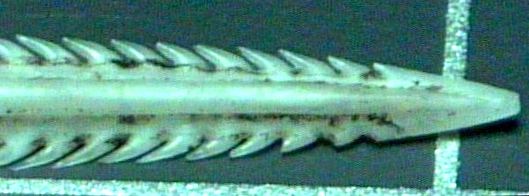 Bat rays can give a very nasty sting
Bat rays can give a very nasty sting
Size: Reported to reach nearly six feet across and over 200 pounds. Most bat rays caught from piers are less than fifty pounds but many in excess of a hundred pounds are caught every year.
A 240-pound bat ray was reported from Newport Bay in 1957. I received a note on the Pier Fishing in California Message Board of a 246-pound fish with an 8.5-foot-wing span that was reputedly taken from the Newport Pier in the ’80s. However, the width sounds too wide leaving the weight also in doubt. I’ve seen pictures of a 176-pound bat ray taken from the Newport Pier and a 175-pound bat ray that was caught at the Aliso Beach Pier in (I believe) 1990.
 A very large bat ray landed at the Hermosa Beach Pier in the ’70s by “Mola Joe”
A very large bat ray landed at the Hermosa Beach Pier in the ’70s by “Mola Joe”
Another fish, this one weighing 203 pounds and measuring 54 ½ inches wide was measured and weighed on a certified scale. It was caught at the Stearns Wharf in Santa Barbara on April 24, 2004. The fish struck a live smelt bait and was landed after a fight lasting one hour and twenty minutes. The fish was hooked and fought by James Elledge, and gaffed by Ron Maxell. With the help of bait shop owner Ray Angel (how appropriate) the fish was carried over to the Santa Barbara Shellfish Company to their certified scales. PFIC representative Boyd Grant was soon on the scene to witness and photograph the huge fish…one of the largest bat rays ever caught on a California pier (and possibly the largest to be weighed on a certified scale).
 The Stearns Wharf bat ray; a possible record?
The Stearns Wharf bat ray; a possible record?
Although we’ve had several reports over the years of bat rays weighing 200 pounds or more, the official state (and world) record remains a fish that weighed 181 pounds 0 ounces. It was caught at the Huntington Beach Pier on July 24, 1978 by Bradley A. Dew, a senior at Huntington Beach High School. Records indicate it was 23 pounds over the prior record and, according to the Dept. of Fish and Game, the fish had a 5 1/2-foot-wingspan, a 3-inch-long stinger, and the width across the bat ray’s eyes was an even ten inches.
 A large bat ray taken at the North T-Pier in Morro Bay in 2006
A large bat ray taken at the North T-Pier in Morro Bay in 2006
According to the California DF&G “female bat rays reach a greater size than males, attaining a maximum disc width of 70.9 inches and weight of 210 pounds. The largest reported male is 40 inches wide and a weight of 37 pounds. Bat rays grow slowly, reach sexual maturity relatively late, have few young, and seem to be fairly long-lived. A 60-inch disc width female was estimated to be 24 years old.” So, all of the big bat rays are moms, grandmas or maybe even great grandmothers.
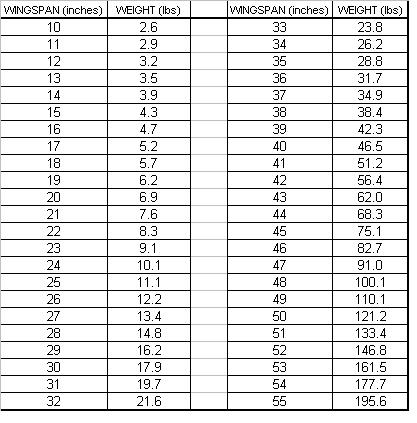 A chart showing the relationship of width and pounds
A chart showing the relationship of width and pounds
 A small bat ray taken at the 2015 Mud Marlin Derby in Berkeley
A small bat ray taken at the 2015 Mud Marlin Derby in Berkeley
Range: Gulf of California to Yaquina Bay, Oregon.
Habitat: Prefers a flat, rocky bottom or sand among rocks although also seems to enjoy hanging around kelp beds. Most commonly caught in sandy or muddy bottom bays and the deeper water areas around piers. Bat rays basically “fly” through the water using their powerful pectoral fins and occasionally they will leap out of the water when hooked.
 A large bat ray taken at Crystal Pier in San Diego
A large bat ray taken at Crystal Pier in San Diego
Piers: Bat rays are caught at almost all piers in California, both oceanfront and those in bays. Best bets: Shelter Island Pier, San Clemente Pier, Balboa Pier, Newport Pier, Huntington Beach Pier, Redondo Beach Pier, Hermosa Beach Pier, Stearns Wharf, Cayucos Pier, Berkeley Pier, San Mateo Pier, Elephant Rock Pier, Angel Island Pier, Eureka Municipal Wharf and Del Norte Street Pier (Eureka).
Shoreline: A frequent catch of shore anglers from San Diego Bay to Humboldt Bay.
 A bat ray taken at the Elephant Rock Pier in Tiburon in 2003
A bat ray taken at the Elephant Rock Pier in Tiburon in 2003
Boats: A frequent catch by boaters and kayakers fishing in almost every California bay.
Bait and Tackle: Bat rays eat a wide variety of foods with oysters, clams, crabs, shrimp, abalone, snails and worms being scarffed down on a regular basis. To be expected, they’ll also take almost any bait. However, frozen or live squid, and live bait such as anchovies, ghost shrimp, mud shrimp and grass shrimp, produce most of the fish. Frozen squid is the least expensive and easiest bait to use and is undoubtedly the number one bait for bat rays.
 A small bat ray from the Santa Monica Pier in 2009
A small bat ray from the Santa Monica Pier in 2009
It’s reported by the way that these strong rays use their pectoral fins to lift their body rapidly up and down to create a suction that sweeps away the sand and gives easy access to their food on the bottom. Because of the potential large size, anglers wishing to fish specifically for bat rays should use heavy tackle and have a gaff or net available to bring the fish up onto the pier. Never use a pier gaff to lift them up to a pier unless you’re intending to keep them for food.
Food Value: Very good.
 A really neat graphic designed by Lucy Philips
A really neat graphic designed by Lucy Philips
Comments: Although Ray Cannon’s book How To Fish the Pacific Coast holds a cherished spot on my library shelf, and in many ways was a model for Pier Fishing In California, I believe he was wrong in his comments on bat rays. His most egregious was that “These giant Bat Rays should be exterminated whenever possible because of their menace to crabs, lobsters, and all kinds of edible shellfish.” Although it’s true that those species may be included in a bat ray’s diet, I’m not sure why they were singled out over predators. I think it reflects the thinking of the day, in particular the opinion that bat rays were a danger to commercial oyster operations, i.e., those in Tomales Bay. We know today that they are not a danger to those operations; in fact, they may help by keeping crabs under control. I’m not sure why he made a second statement, an assertion that bat rays are “Seldom taken by anglers.” Even back in those days bat rays (usually called sting rays) were a common catch, and several shark and ray derbies were conducted along the coast, the most famous probably being that at Moss Landing. Today, many anglers concentrate on bat rays. The rays reach a very large size, they put up a strong fight, and are delicious to eat once the fight is over (although more and more people practice catch-and-release with them).
 Anna and a bat ray at the 2014 Mud Marlin Derby at Berkeley Pier
Anna and a bat ray at the 2014 Mud Marlin Derby at Berkeley Pier
Of interest are the bat ray pools found at several aquariums (including the Monterey Aquarium, The Aquarium Of the Pacific, and the Chula Vista Nature Center). The bat rays can be petted and in fact are rather pet-like; some even seem to like to have their backs stroked. Yes, their stingers have been removed! The venomous spines are cut off about once a month (before they reach a length long enough to hurt anyone). Apparently the bat rays receive no harm from these “manicures,” in fact the spines are made of keratin, the same substance found in human fingernails, and the spines grow back. However, bat rays in the wild still have their spines and can inflict a painful wound, so be very careful if you catch one (and some bat rays have two or even three stingers). For some reason Stearns Wharf in Santa Barbara sees a lot of small, immature bat rays and they’re usually called monkey face rays.
 Pete Wolf of “Big Hammer” fame and a 52-inch bat ray from the Goleta Pier
Pete Wolf of “Big Hammer” fame and a 52-inch bat ray from the Goleta Pier
Scientists report that bat rays move into inshore waters to breed during the summer then tend to move offshore in the winter (so guess when they are more likely to be caught from a pier). While inshore, they are sometimes found in large concentrations. At times these bat ray gatherings contain several thousand individuals. The sea bottom holding these creatures must look a little weird and would certainly have a somewhat alien feeling; not sure if it would be more like a black-cloaked Darth Vader convention, a Raider Nation convention, or something even more outlandish (and scary), a political convention.
 A very young “Minnow Magnet” (Justin Morris) and an even younger bat ray at the Paradise Park Pier in 2004
A very young “Minnow Magnet” (Justin Morris) and an even younger bat ray at the Paradise Park Pier in 2004
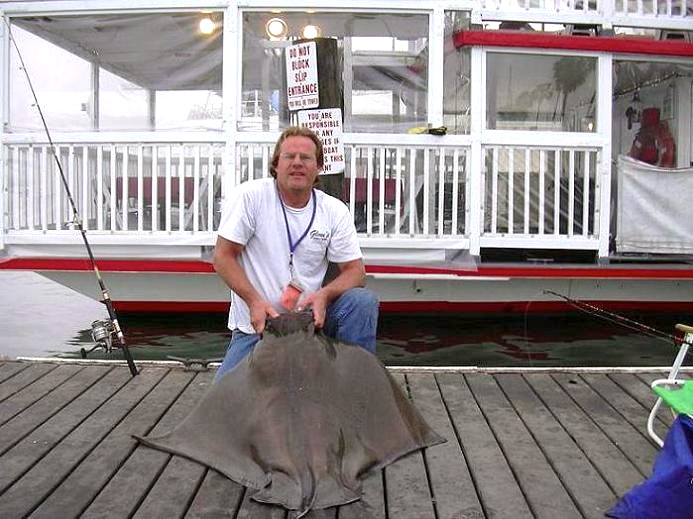 “Bat Ray Dave” and a bat ray from Newport Bay
“Bat Ray Dave” and a bat ray from Newport Bay
 Oscar Amaro and a bat ray from the Manhattan Beach Pier in 2015
Oscar Amaro and a bat ray from the Manhattan Beach Pier in 2015
 A bat ray taken at Tides Wharf in Bodega Bay in 2004
A bat ray taken at Tides Wharf in Bodega Bay in 2004
 A bat ray taken at the Goleta Pier in 2006
A bat ray taken at the Goleta Pier in 2006
 A bat ray taken at the 2004 Mud Marlin Derby in Berkeley
A bat ray taken at the 2004 Mud Marlin Derby in Berkeley
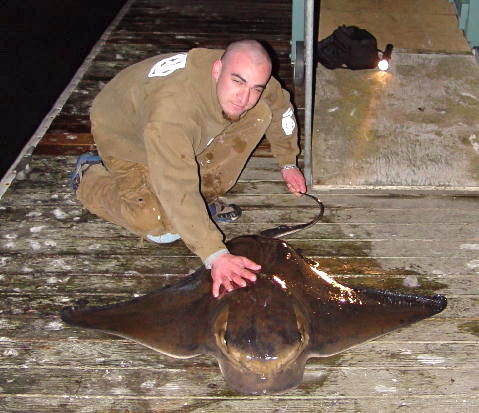 A bat ray taken at the Tides Wharf in Bodega Bay in 2004
A bat ray taken at the Tides Wharf in Bodega Bay in 2004
 A bat ray taken at the 2015 Mud Marlin Derby in Berkeley showing the correct way to hold them (via their mouth)
A bat ray taken at the 2015 Mud Marlin Derby in Berkeley showing the correct way to hold them (via their mouth)
 A bat ray taken at the Ferry Point Pier in Richmond in 2008
A bat ray taken at the Ferry Point Pier in Richmond in 2008
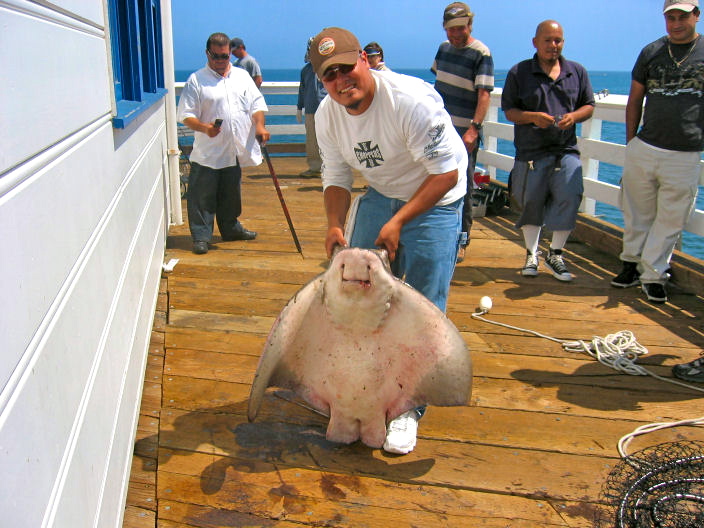 A bat ray at the Malibu Pier in 2007
A bat ray at the Malibu Pier in 2007
 A small bat ray from the Paradise Park Pier in 2015 showing the correct way to hold them (via their mouth)
A small bat ray from the Paradise Park Pier in 2015 showing the correct way to hold them (via their mouth)
 A large bat ray from the Gaviota Pier in
A large bat ray from the Gaviota Pier in
Some unofficial records
≈ 220 Lbs. — Ventura Pier, early ‘80s
Source: PFIC
203 Lbs. — Stearns Wharf (Santa Barbara), James Elledge, April 24, 2004
Source: Personal comm. Boyd Grant; PFIC
≈ 200 Lbs. — Huntington Beach Pier, May 2014
Source: Let’s Go Fishing, Huntington Beach Pier
≈ 200 Lbs. — Huntington Beach Pier, December 2009
Source: Let’s Go Fishing, Huntington Beach Pier
≈ 200 Lbs. — Oceanside Pier, April 2006
Source: Oceanside Pier Bait Shop
≈ 200 Lbs. — Seal Beach Pier, March 2001
Source: Big Fish Bait & Tackle, Seal Beach
≈ 200 Lbs. — Ocean Beach Pier, August 1998
Source: PFIC
≈ 200 Lbs. — Hermosa Beach Pier, “Mola Joe”, 1980s
Source: PFIC
≈ 200 Lbs. — Carpinteria Pier, Bill Hinckley, September 18, 1955
Source: Los Angeles Times, September 19, 1955
≈ 200 Lbs. — Redondo Wharf No. 1, June 25, 1888
Source: Los Angeles Herald, June 27, 1888
181 Lbs.* — Huntington Beach Pier, Bradley. A. Dew, 1978
Source: Los Angeles Times, July 28, 1978 & California Dept. of Fish and Wildlife * = Official state record fish and world record (IGFA)
175 Lbs. — Aliso Beach Pier, August 1984
Source: Aliso Beach Pier Snack Shack
≈ 170 Lbs. — Seal Beach Pier, May 2001
Source: Big Fish Bait & Tackle, Seal Beach
169 Lbs. — Hermosa Beach (pier?), July 30, 1912
Source: Oakland Tribune, July 30, 1912
160 Lbs. — Ocean Beach Pier, May 2009
Source: PFIC
≈ 160 Lbs. — Seal Beach Pier, March 2001
Source: Big Fish Bait & Tackle, Seal Beach
≈ 150 Lbs. — Oceanside Harbor Pier, August 2009
Source: PFIC
150+ Lbs. — Santa Monica Pier, May 2008
Source: Santa Monica Pier Bait Shop
150 Lbs. — Santa Monica Pier, May 2002
Source: Santa Monica Pier Bait Shop
≈ 150 Lbs. — Oceanside Pier, April 2001
Source: Oceanside Pier Bait Shop
≈ 140 Lbs. — Seal Beach Pier, March 2001
Source: Big Fish Bait & Tackle, Seal Beach
135 Lbs. — San Clemente Pier, June, November 1999
Source: PFIC
125 Lbs. — Huntington Beach Pier, Greg Taite, April 1999
Source: Let’s Go Fishing, Huntington Beach Pier
123 Lbs. — Huntington Beach Pier, Robert Gerber, March 1999
Source: Let’s Go Fishing, Huntington Beach Pier
120 Lbs. — Ocean Park Pier, Stuts Baida, July 1927
Source: Los Angeles Times, July 31, 1927
110 Lbs. — Pine Avenue Pier (Long Beach), William Crowder, June 2, 1907
Source: Los Angeles Herald, June 2, 1907
106 ½ Lbs. — Belmont Pier (Long Beach), Bill Kerny, October 13, 1960
Source: Long Beach Independent,October 14, 1960
104 Lbs. — Rainbow Pier (Long Beach), Dave Feske, October 13, 1960
Source: Long Beach Independent, October 14, 1960
100+ Lbs. — Stearns Wharf (Santa Barbara), June 1997
Source: Mike’s Bait & Tackle, Stearns Wharf, June 1997
≈ 100 Lbs. — Santa Cruz Municipal Wharf, Walter Cartwright, April 11, 1934
Source: Santa Cruz Sentinel, April 12, 1934
100 Lbs. — Seal Beach Pier, April 1958
Source: Long Beach Independent-Press Telegram, April 13, 1958














